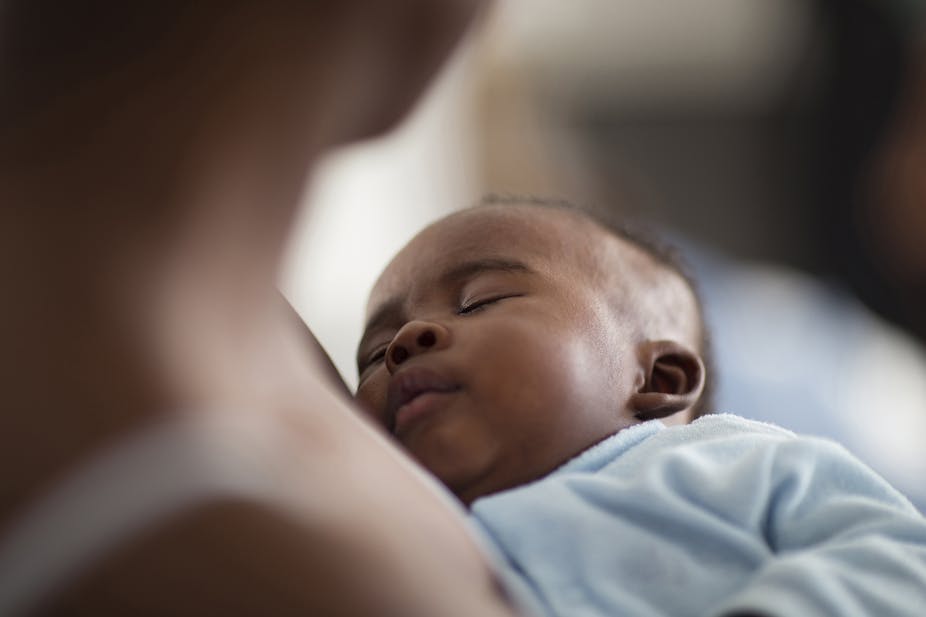Imagine the weight of responsibility for caring for a child when you are not yet fully grown yourself, and the fear of being shamed by parents, fellow learners, and even strangers within the community?
Vast numbers of adolescent mothers, many of them very vulnerable, exist across Africa, but there remains little research on their challenges and what can be done to support them and their children.
Policies and programmes are often small scale, poorly implemented, or not inclusive of adolescent parents.
Detailing findings from the largest adolescent mother cohort study in sub-Saharan Africa, this article sheds light on some of the challenges they face, potential entry points for interventions and programmes, and opportunities to support adolescent mothers and their children.
Some adolescent mothers from sub-Saharan Africa say they did not realise they could get pregnant or how to prevent pregnancies, pointing to the challenges to provide youth with comprehensive sex education and the possible cultural obstacles to communication about sexunderlying early pregnancy.
Even before the COVID-19 pandemic sparked an education crisis, nearly one in five girls aged between 15 and 19 globally were not in school, employment or training.
Many adolescent mothers have a history of poor school performance, and a pregnancy can act as a catalyst for early dropout.
The HEY BABY (Helping Empower Youth Brought up in Adversity with their Babies and Young children) research study was conceptualised to better understand adolescent mothers’ needs.
The study aimed to identify the hurdles young mothers face and how to overcome them. Between 2017 and 2019, HEY BABY collected data from over 1,000 adolescent mothers and their children living in rural and urban areas of South Africa’s Eastern Cape.
Addressing mothers’ obstacles and identified points of intervention
Prior research, using older samples, from South Africa indicates that only between 30%and 50% of young mothers manage to continue their education, highlighting a continued need to understand better why this is the case.
Our most recent study showed that almost 70% of young mothers indicate having returned to school after birth. These mothers showed lower poverty rates, fewer repeated grades preceding the pregnancy, continued schooling during pregnancy, higher daycare/crèche use, more family childcare support, and lower engagement in exclusive breastfeeding within six months of birth.
Examining the relationship between poverty and school enrolment within this population, we identified two distinct routes towards a return to school:
Route one: Lower household poverty drives schooling throughout pregnancy which, in turn, drives higher school return rates post-birth;
Route two: Lower household poverty drives the use of daycare/crèche services which, in turn, drives higher school return rates post-birth.
The large proportion of mothers - 30% in our sample - who do not return to school might require substantial targeted support to re-engage with education.
Our results suggest that financial support alone might not be sufficient to support adolescent mothers. But when combined with other resources, such as affordable daycare and services that support school retention during pregnancy, they could prove effective.
This evidence aligns with the growing interest in cash-plus programmes which provide cash payments in addition to complementary interventions to strengthen outcomes. This type of intervention might help adolescent mothers to continue their education.
Further research from the HEY BABY team provides valuable insights into maternal education and its potential drivers and consequences:
Better maternal education is associated with increased child cognitive development.
Withdrawal from school during pregnancy is associated with more poverty, higher grade repetitions and greater lack of information about the pregnancy.
Some adolescent mothers face compound risks. For example adolescent motherhood and HIV-infection double the chances of dropping out of school.
Food security is associated with both education and lowered HIV behaviours, including age-disparate sex and sex on substances.
Access to formal childcare services has a substantial positive impact for adolescent mothers such as engagement with education and employment, optimism about the future, and improved parenting) and showed better child development over time.
Evidence to improve the implementation of school policies
Progressive laws and school policies, and their effective implementation, are essential to increase school access for pregnant girls and adolescent mothers.
In South Africa, a national policy assigns the responsibility for managing the care and support for adolescent mothers to individual schools. These schools need to know how to provide effective and targeted help, and which community networks to tap into.
Establishing and promoting education, health, and social systems that are responsive to the rights and needs of pregnant girls and adolescent mothers will require that the policy implementation is grounded in robust evidence.
Only then can we effectively improve the lives of adolescent mothers and our future generations.

